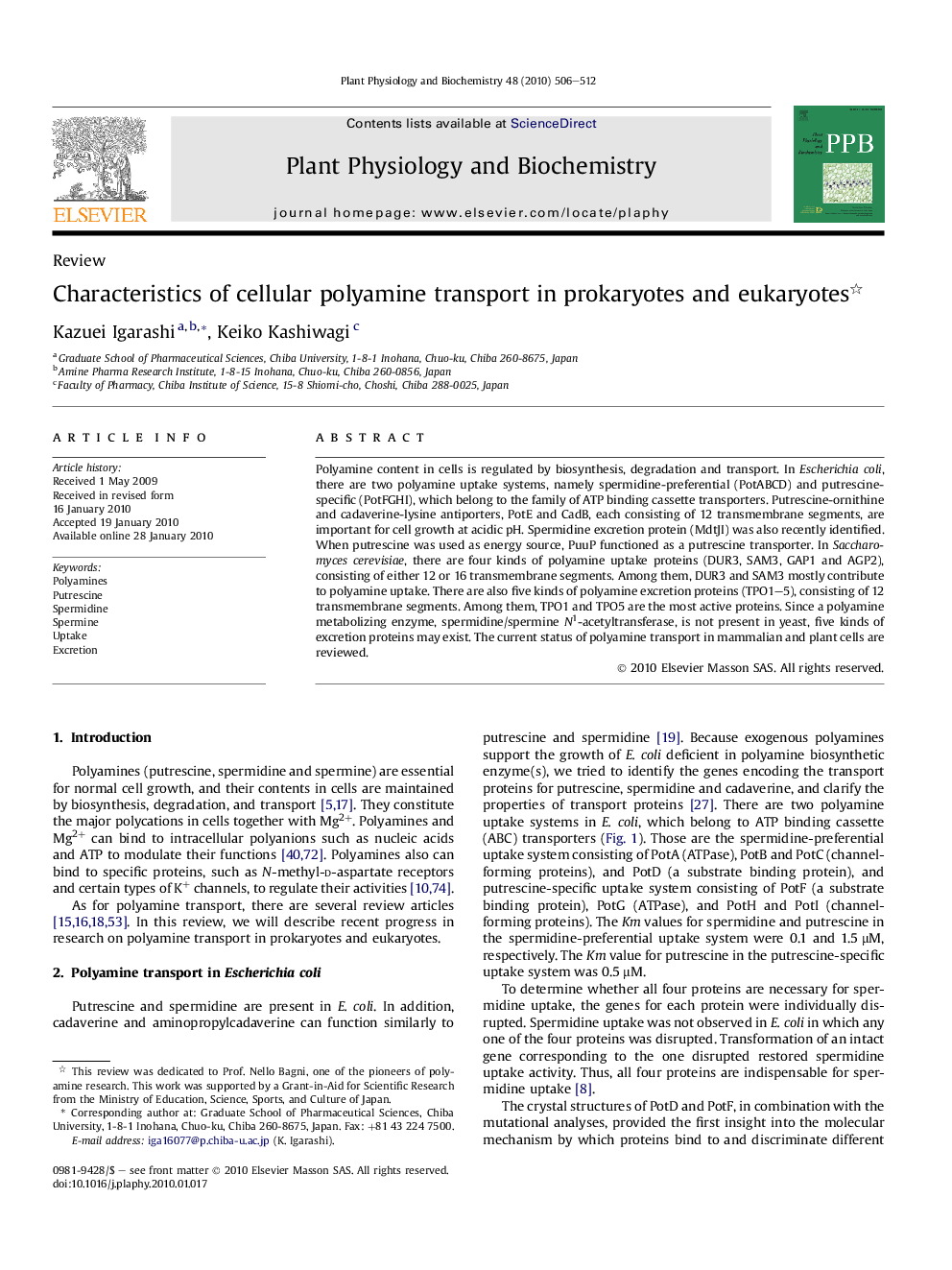| کد مقاله | کد نشریه | سال انتشار | مقاله انگلیسی | نسخه تمام متن |
|---|---|---|---|---|
| 2015363 | 1067557 | 2010 | 7 صفحه PDF | دانلود رایگان |

Polyamine content in cells is regulated by biosynthesis, degradation and transport. In Escherichia coli, there are two polyamine uptake systems, namely spermidine-preferential (PotABCD) and putrescine-specific (PotFGHI), which belong to the family of ATP binding cassette transporters. Putrescine-ornithine and cadaverine-lysine antiporters, PotE and CadB, each consisting of 12 transmembrane segments, are important for cell growth at acidic pH. Spermidine excretion protein (MdtJI) was also recently identified. When putrescine was used as energy source, PuuP functioned as a putrescine transporter. In Saccharomyces cerevisiae, there are four kinds of polyamine uptake proteins (DUR3, SAM3, GAP1 and AGP2), consisting of either 12 or 16 transmembrane segments. Among them, DUR3 and SAM3 mostly contribute to polyamine uptake. There are also five kinds of polyamine excretion proteins (TPO1–5), consisting of 12 transmembrane segments. Among them, TPO1 and TPO5 are the most active proteins. Since a polyamine metabolizing enzyme, spermidine/spermine N1-acetyltransferase, is not present in yeast, five kinds of excretion proteins may exist. The current status of polyamine transport in mammalian and plant cells are reviewed.
Journal: Plant Physiology and Biochemistry - Volume 48, Issue 7, July 2010, Pages 506–512